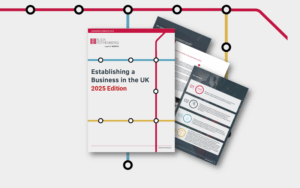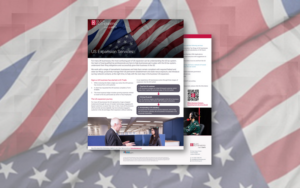Autumn Budget 2022: A Budget that was all about freezing thresholds and cutting tax reliefs
In many ways it was normality restored to Budgets gone before, after the short-lived give-a-way of Kwasi Kwarteng, just under eight weeks ago.
In just under an hour, Jeremy Hunt set out his Budget priorities for stability, growth, and public services. In some ways it was a relief not to have too much of a shock to the system after recent fiscal events and four Chancellors in four months. As predicted, tax rises were announced together with spending cuts, delivering a total of £55 billion.
The Chancellor held fast on his generally bleak outlook and announced the tax rises and public spending cuts which he considers essential to balance the books and return the UK to fiscal stability.
Personal Tax
The abolition of the Health & Social Care Levy announced in the mini-Budget, is one of the few measures that remains today. While it wasn’t reintroduced to apply to higher earners, as many expected, the Chancellor did reduce the threshold at which the 45% becomes payable from £150,000 to £125,140. Again this wasn’t a surprise today, having been widely reported in advance, and means those earning £150,000 or more will pay just over £1,200 a year more in tax. The increase, however, is still lower than the amount that would have been payable under the Health & Social Care Levy.
Reducing or freezing thresholds increases tax without increasing the rates of tax and has become favoured by past Chancellors, and nothing was different today. The Income Tax personal allowance and higher rate thresholds and main National Insurance thresholds will be frozen for a further two years, until April 2028. This will mean at least six years where personal tax thresholds have remained at the same level and represents stealth taxation on an unprecedented scale.
While the Chancellor’s clear intention is that those with the broadest shoulders contribute more, his measures mean the breadth of those broad shoulders becomes narrower as the impact of the fiscal drag bring those on low incomes into Income Tax sooner, and earners on modest incomes in to higher rate tax brackets. The Office for Budget Responsibility (OBR) estimates this will see an additional 3.2 million new tax payers and around 2.6 million will face paying the higher rate tax by 2027/28. The measures are expected to raise £1,260m in additional taxes in 2027/28.
The Chancellor also announced a reduction of the dividend allowance from £2,000 to £1,000 in April 2023 and then £500 from April 2024. Introduced in just 2016, at a rate of £5,000pa, the benefit of the dividend allowance will be eroded to just 10% of its original amount. When it was introduced, the dividend allowance was badged as a relief to make the tax system more simple (and to off-set the impact of increasing dividend tax rates from that year) and meant only those with significant dividend income would need to pay more tax. The reduction in the allowance is likely to see people with very modest portfolios pay more tax on dividend income in the future.
Entrepreneurs, investors and advisors alike breathed a sigh of relief when the rate of Capital Gains Tax (CGT) was left unmentioned in the Budget. CGT rates are lower than Income Tax rates and can be seen as an easy target to raise tax. However, unexpectedly the annual exemption (the amount of capital gain you can earn tax free each year) will be reduced from £12,300 to £6,000 in April 2023 and further to £3,000 from April 2024. The Treasury predicts that this will raise an additional £440m in 2027/28.
While the reductions in these allowances will only impact individuals that sell a capital item and make a profit (a relatively small percentage of the population) it will undoubtedly increase the number of individuals brought into self-assessment. Under the current rules, an individual can realise capital gains of up £12,300pa tax free and provided the gross sales proceeds are not more than four times the annual exemption, there is no need to report the disposal to HMRC. While the reporting threshold has been set at £50,000 for gross proceeds, the reduction in allowance means many more individuals will be required to file a tax return.
The inheritance tax (IHT) threshold will remain at £325,000 until April 2028, a level at which it has been stuck since 2009/10. Although the residence IHT nil rate band introduced in April 2017 has helped remove a number of estates from IHT, the continuing freezing of thresholds means more and more estates will be subject to IHT in the future. It is estimated that already around one in every 25 estates are within the scope of IHT and IHT receipts for the Treasury have gone up at least 11% in the last year alone. IHT is no longer seen as a tax paid by only the rich but a tax paid by the working.
Pension, benefits and minimum wage
There were times over the last few months where it looked like the triple lock would be unlocked, and pensions and benefits would fall behind inflation. It was welcomed that the Chancellor recognises not only the vulnerability, but the importance of these people, and the pledge made previously by the Conservatives has stuck with a commitment to increase pensions and benefits in line with inflation. There was also a recommendation to increase the National Living Wage by 9.7% to £10.42 from April 2023. While unlikely to be welcomed much by employers, it may help bring staff back to struggling sectors, particularly hospitality.
Energy Price Cap
The Energy Price Guarantee (EPG), previously expected to last for two years from October 2022, was also already pre-announced to end in April 2023. Today the Chancellor announced that the EPG will continue from April 2023 for a further 12 months, but set at a higher level of £3,000 per year for the average household. Targeted support for the most vulnerable will be provided by additional cost of living payments of £900 to households on means-tested benefits, £300 to pensioner households and £150 for individuals on disability benefits. Based on current price forecasts it is expected this will mean an average of £500 support for every household in the country. While the extension, even at a higher rate, is welcome at a time of soaring inflation, it’s unlikely to go far enough to help the most vulnerable.
Electric cars
Once a darling of the Government, even electric cars didn’t escape this Budget unscathed, with the Chancellor announcing that to “make motoring fairer”, from April 2025 electric vehicles will no longer be exempt from Vehicle Excise Duty. While this will certainly make motoring fairer, as after all electric vehicles still contribute to wear and tear on the roads, it’s more likely driven (no pun intended) by the fact that by 2025 over half of new vehicles in the UK roads are expected to be electric. Without such a measure, it’s estimated the Chancellor would be £500m worse off in 2025/26, increasing to £1,595m in 2027/28.
Stamp Duty Land Tax (SDLT)
The September Mini-Budget SDLT changes also escaped unscathed today, but are now only set to last until 31 March 2025. The Chancellor’s intention is to support the housing market during a time of declining activity and yet the success of such measures will be largely dependent on what happens to the costs of borrowings. No changes or announcements were made in connection with the SDLT treatment of mixed used or multiple dwelling transactions. But watch this space.
Corporation Tax
While the Chancellor was quick to announce no increases in headline tax rates, he seemed to have forgotten that the planned increase in the Corporation Tax rate to 25% (first announced in the Sunak Budget of March 2021) will still be going ahead from 1 April 2023. While the 25% rate applies only to companies with profits of over £250,000, where profits are between £50,000 and £250,000 the marginal Corporation Tax rate on those profits actually increases to 26.5%. While the 25% rate is therefore only expected to apply to the largest 10% of companies in the UK, many more companies of all sizes will feel the squeeze from April 2023.
The good news is the Chancellor has confirmed that a new permanent Annual Investment Allowance (AIA) of £1 million will be introduced from April 2023. It had previously been intended that the AIA would revert to just £200,000, before Kwasi Kwarteng set this at £1m during his Mini-Budget. Clearly this is a figure the current Chancellor agrees with and recognises as necessary to incentivise investment by the SME sector.
However, there will be disappointment in some parts of the country that the Government has decided to “refocus the Investment Zones programme”. Investment Zones were announced in the Mini-Budget and promised generous tax reliefs including unlimited 100% first year allowances and an enhanced Structures and Buildings Allowance of 100% over five years. Further details of the ‘refocus’ will be published in the coming months.
Perhaps the most controversial business tax announcement, but the least surprising, is the decision to reduce the Research & Development (R&D) tax credit under the SME scheme. The Government has been persuaded that the extent of fraud and error in tax credit claims makes the current generosity of the scheme unsustainable. The additional tax deduction for qualifying R&D spend from April 2023 will decrease from 130% to just 86% and the SME credit rate will decrease from 14.5% to 10%. This means that the tax credit on R&D spend of £100,000 will fall from £33,350 to £18,600. While the tax credit continues to allow ‘cashback’ for losses, the tax benefit of carrying forward losses against future profits of the trade offers the benefit of up to £46,500 (25% tax payer) or over £49,000 if the company falls in the marginal 26.5% rate.
While reducing relief under the SME scheme, the Chancellor has increased the benefit of the Research and Development Tax Credit (RDEC), typically used by large pharmaceutical companies and other large corporate groups which don’t qualify for the SME scheme. From 1 April 2023, the RDEC will increase from 13% to 20%. This means a company spending £100,000 on qualifying R&D will generate a tax credit of £15,000 (being £20,000, less Corporation Tax at 25%) which reduces the Corporation Tax bill or in some situations can be repaid.
Alongside these reforms to ‘rebalance’ the two R&D regimes, the Government has also announced plans to introduce ‘a simplified, single RDEC-like scheme for all’. Consultation is promised but no timetable has been given.
The Chancellor announced a freeze to the level at which employers start to pay Class 1 Secondary NICs for their employees at £9,100 from April 2023 until April 2028. This is likely to be the biggest cost to businesses and is set to raise £3,145m in 2023/24, increasing to £5,825m in 2027/28. With the cost of wages already increasing, the additional NIC due by employers is likely to be passed on to consumers through further price increases, or result in a reduction of employment. The Employment Allowance, however, will stay at £5,000 (for 2022/23) and the Government estimates that as a result 40% of business do not pay employers NICs and so will be unaffected by the fixing of the threshold.
One measures announced by the Chancellor will be popular with all – all apart from the energy sector. As widely expected, the windfall tax on energy companies (the ‘Energy Profits Levy’) will increase from 25% to 35% and will be extended until March 2028. What many don’t know is that oil and gas companies are already taxed differently to other companies and pay 30% Corporation Tax and a 10% supplementary charge, giving a headline tax rate of 40%. The increase in the levy will therefore give a total headline rate of 75% on relevant profits. The increase in the levy is expected to raise £6,060m in 2022/23, although this is largely dependent on energy prices which remain volatile. In addition, a new, temporary 45% ‘Electricity Generator Levy’ will be applied on ‘extraordinary returns’ being made by electricity generators.
Business rates
There was little to celebrate on the High Street today, although an additional £13.6 billion of support for businesses over the next five years was announced. This includes freezing the business rate multipliers, increasing relief for retail, hospitality and leisure to 75% and reforming transitional relief. The concern on the high street remains declining footfall, increasing prices and supply chain issues, all in the run up to Christmas during a time of decreasing consumer spending power.
VAT thresholds
The VAT registration threshold has remained unchanged and is already more than twice as high as the EU and Organisation for Economic Co-operation and Development (OECD) averages. While more companies may become liable to account for VAT as a result of freezing the threshold, it’s widely accepted that VAT is only ultimately passed on to the consumer and would have an immediate impact on inflation and therefore now is not the time to tinker with this.
Would you like to know more?
If you have any questions about the Government’s Mini Budget and how it may impact you, please get in touch with your usual Blick Rothenberg contact or Caroline or Genevieve using the details on this page.
You can also visit our Budget Hub, where you can find our commentary and a range of insights to help you better understand how the Budget may affect you.
Contact us

You may also be interested in

Further Opportunities for US Tech Investment in the UK

Changes to FRS102 and it’s alignment to International standards













